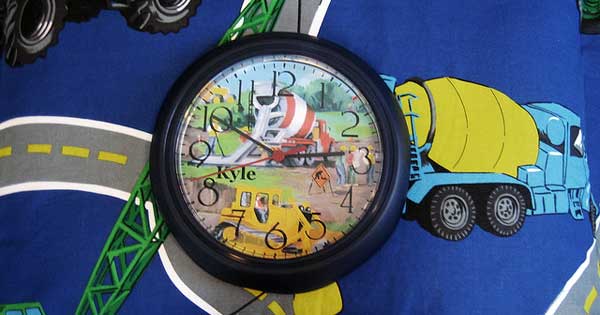
One recent morning, I said to my twins, “The clock says it’s time to go to nursery!” My son asked why. “The hands on the clock turn and turn until they reach nursery time,” I explained. “Why do the hands on the clock turn and turn?” came the not unexpected response. Hmm, I thought. I have absolutely no idea.
In more than 20 years of science writing, I have described the physics of invisibility, the biology of disgust, and why we spend so much time daydreaming. But explaining the world to my three-year-olds is a challenge that offers me a matchless pleasure. As small children, their notion of time is nebulous. And explaining time, it turns out, “is one of the deepest open questions in physics,” as physicist Gavin Crooks of Lawrence Berkeley National Laboratory in Berkeley, California, wrote to me via email. In fact, he said, “understanding the nature of time is such a conceptually hard problem that professional philosophers are needed.”
I first turned to some of my nonprofessional philosopher friends for answers to my son’s questions. “Explain that it involves laws of motion in a nonaccelerating, inertial frame of reference,” said Jeffrey Kluger, the science and technology editor at Time magazine, “though the anchoring of the gears prevents the rightward deflection that would usually result from clockwise motion. (Still can’t figure out why Sesame Street rejected my application.)”
Another friend, Mallory Lutz, suggested I allow my son to take a clock to pieces. Assuming that I am willing to sacrifice a clock for science—an exercise that would enthrall him—the experiment would show that some sort of power source (a spring or a battery) drives an oscillator that vibrates repetitively at a constant frequency. A controller device converts these oscillations into pulses, which are counted and converted into seconds, minutes, and hours; an indicator—the hands of the clock—displays the results in a way that humans can understand. Yes, I confess that I cribbed that answer from Wikipedia.
Of course, explaining why time moves forward inexorably is much more complicated than describing how a clock works. Why doesn’t time move backward? Or does it? One friend, Jennifer Karan, told me that time doesn’t always move forward and recommended that I watch Doctor Who. Crooks, who has investigated the movement of time, confirmed this. “Time itself doesn’t have any built in directionality,” he explained. “Rather, our sense of future and past is a result of the second law of thermodynamics; entropy (disorder essentially) increases toward the future. But disorder can only increase because the universe was in a very ordered state only a few billion years ago, an event we call the Big Bang. So the clock’s rotation tells us that we’re moving away (in time) from the Big Bang.”
I am not sure that my children can understand a concept like the Big Bang, although they do enjoy banging things. On the other hand, they definitely do comprehend the concept of disorder—burst balloons, toys scattered about, a lost truck. The turning of the clock’s hands signals that the universe is expanding might be a bit lost on them. But blowing up a balloon and bursting it could reveal how the balloon changes its nature over time. I’m mindful of this lesson in entropy myself. Whenever I smash a cup or plate, I invoke William Butler Yeats and the late Nigerian writer Chinua Achebe: “Things fall apart.”

